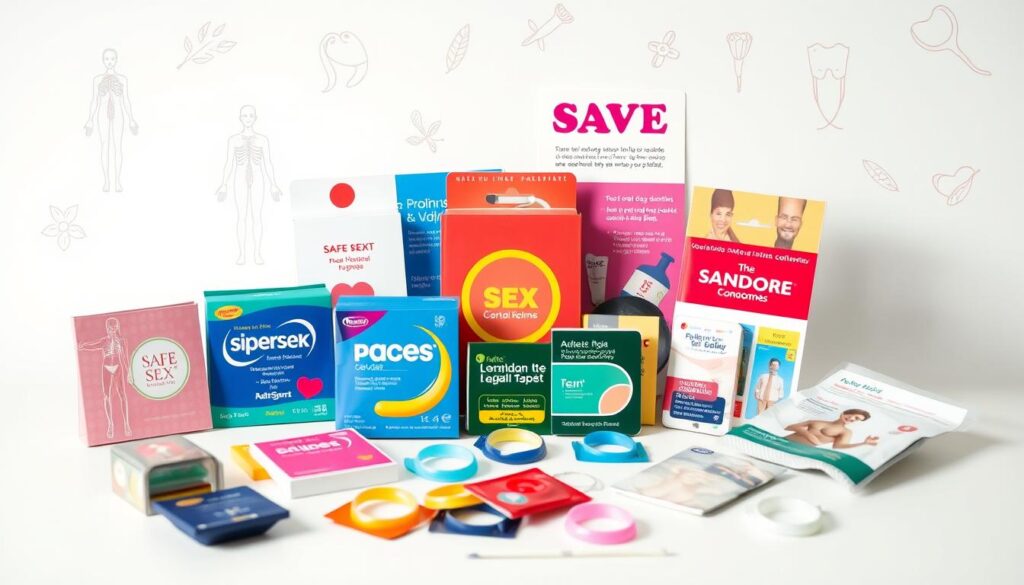Sexually transmitted infections (STIs) are a serious health issue for sexually active people. Young adults aged 15 to 24 face higher risks of STIs. Understanding these infections is vital for maintaining sexual health.
STIs spread through sexual contact, bodily fluids, and skin-to-skin contact1. Your risk grows with multiple partners and not using protection2. Some infections may not show symptoms right away.
Regular sexual health screening is crucial for early detection. It helps identify potential infections before they worsen. This practice is especially important for those with multiple partners.
STIs come in different types. These include bacterial STDs like gonorrhea and chlamydia. Viral infections such as HIV and HPV also exist. Parasitic infections like trichomoniasis are another type2.
Knowing transmission routes and risk factors helps you make smart choices. It’s key to protecting yourself and your partners. Stay informed to keep your sexual health in check.
Key Takeaways
- STIs can affect individuals of all ages and backgrounds
- Regular screening is crucial for early detection
- Protection and communication are key prevention methods
- Some STIs may not show immediate symptoms
- Different types of STIs require different prevention strategies
Understanding Common STDs and Their Impact on Health
STIs are a major global health issue. They affect millions worldwide. Over 1 million curable STIs are acquired daily, making awareness crucial3.
Knowing about different STIs helps protect you and your partners4. More than 20 types can affect both men and women. These infections can lead to serious health problems4.
Types of Sexually Transmitted Infections
Key Warning Signs and Symptoms
STIs can show varied symptoms or none at all4. Common signs include genital discharge, painful urination, and skin lesions. Some infections can pass from pregnant people to babies4.
Early detection and treatment are critical for managing STIs and preventing long-term health complications.
Antibiotics treat bacterial and parasitic STIs4. Viral infections like herpes and HIV need ongoing antiviral management. Vaccines for HPV and hepatitis B can prevent certain STIs4.
Essential Prevention Methods for STDs
Protecting your sexual health requires a smart approach to preventing STDs. Safe sex practices are crucial for your well-being. They help reduce the risk of disease transmission5.
Vaccination is a powerful tool against STDs. The HPV vaccine is recommended for ages 11-26. Adults up to 45 can also get it6.
Hepatitis B shots are vital for sexually active people with multiple partners6.
- Consistent condom usage remains one of the most effective prevention methods5
- Latex condoms reduce HIV transmission by 71-80%6
- Consider alternative condom types like polyurethane for comparable protection6
Sexual health screening is key for sexually active individuals. Experts suggest testing when you have a new partner or suspect exposure5.
Undiagnosed STDs can cause serious health problems. These may include infertility and other long-term issues5.
“Knowledge and prevention are your best defenses against sexually transmitted diseases.”
Pre-exposure prophylaxis (PrEP) medications can greatly reduce HIV transmission risks. This is especially helpful for high-risk individuals7.
Other useful strategies include:
- Limiting sexual partners
- Practicing mutual monogamy
- Avoiding sexual activity under the influence of alcohol or drugs
Protecting your sexual health is an ongoing process. It requires open communication, education, and responsible choices5.
Conclusion
STD prevention is vital for your sexual health. Over 1 million sexually transmitted infections occur globally each day8. Up to 90% of these infections show no symptoms, making regular testing crucial9.
Safe sex education helps prevent STD spread. Learning about risks and protection can reduce infection chances. Millions of bacterial STDs are reported yearly, highlighting the need for good sexual health practices8.
Commit to sexual health by staying informed and getting screened. Talk openly with partners about protection. Some infections are curable, while others need ongoing care9.
Breaking STD testing stigmas is key to public health. Open discussions about sexual well-being help reduce global infection rates8. Your actions matter in the fight against STDs.
FAQ
What are sexually transmitted diseases (STDs)?
How do I know if I have an STD?
What are the most common types of STIs?
How can I prevent STDs?
What are the potential long-term health impacts of untreated STIs?
When should I get tested for STDs?
Are all STDs curable?
What additional protection is available against STDs?
Source Links
- Sexually Transmitted Infections (Sexually Transmitted Diseases) – https://my.clevelandclinic.org/health/diseases/9138-sexually-transmitted-diseases–infections-stds–stis
- Sexually transmitted diseases (STDs) – Symptoms and causes – https://www.mayoclinic.org/diseases-conditions/sexually-transmitted-diseases-stds/symptoms-causes/syc-20351240
- Sexually transmitted infections (STIs) – https://www.who.int/news-room/fact-sheets/detail/sexually-transmitted-infections-(stis)
- Sexually Transmitted Infections | STIs | Venereal Disease | MedlinePlus – https://medlineplus.gov/sexuallytransmittedinfections.html
- How to prevent sexually transmitted diseases (STDs) – https://www.piedmont.org/living-real-change/how-to-prevent-sexually-transmitted-diseases-(stds)
- Primary Prevention Methods – https://www.cdc.gov/std/treatment-guidelines/clinical-primary.htm
- How to Prevent Sexually Transmitted Infections (STIs) – https://www.acog.org/womens-health/faqs/how-to-prevent-stis
- Global perspectives on the burden of sexually transmitted diseases: A narrative review – https://pmc.ncbi.nlm.nih.gov/articles/PMC11098264/
- The Presentation, Diagnosis, and Treatment of Sexually Transmitted Infections – https://pmc.ncbi.nlm.nih.gov/articles/PMC4746407/
